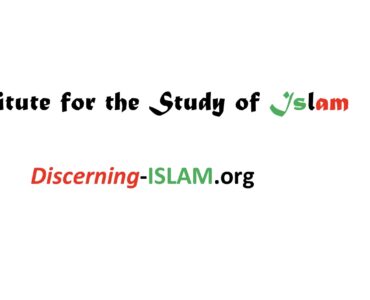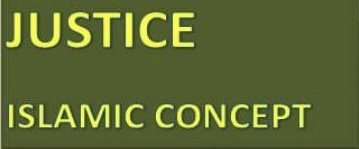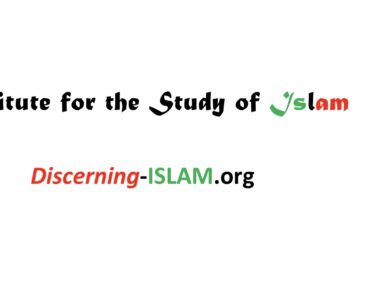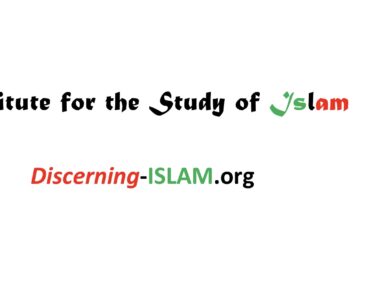
Jihād Organizations
During the 1990s and particularly after the September 11, 2001 attacks in the United States, jihād organizations have increasingly been recognized as fundamental actors in contemporary world politics and as major factors of disruption, threat, and instability at the local as well as the global level. They have therefore drawn much attention from the media, from decision-makers, and from academics alike. In the representation of many Westerners, they have become a kind of ultimate, new post–Cold War enemy that is said to put into jeopardy the livelihoods and values of many — whether in Europe and North America or in the Muslim world. The complexity of these groups as well as their diversity have yet been insufficiently acknowledged.
Jihād organizations cane be defined in a broad way as representative of Islamist groups that consider violence as an efficient means of political action. One should keep in mind that such violence is not necessarily directly targeted at civilians and should not always be seen as random, indiscriminate, or blind because this violence often carries a specific agenda that cannot be ignored. Consequently, automatically equating jihād to terrorism or to a kind of nihilism is largely incorrect. Indeed, however similar their names might be, jihād organizations are diverse; they have different objectives, multiple strategies, and various targets, some of which can be considered as legitimate ways of resisting an oppression. Furthermore, the war they wage should not be considered as necessarily unjust simply because it is legitimized through a religious vocabulary. Their growing role and number does not say as much about Islam, as is often assumed, as it says about attempts to exploit Islam politically and to fill in an ideological and political vacuum.
Discourse
Upon their emergence in the 1970s as significant actors, prominent jihād organizations have legitimized themselves and their actions through Islamic discourse mainly because of its capacity (it is the Islamic discourse’s capacity that appears as endogenous) to appear as endogenous and as an alternative to the founding myths of the post-independence nationalist governments that were present in many parts of the Third World. Such discourse proved effective in mobilizing segments of the population and, from its main (although not exclusive) cradle in the Arab world and particularly Egypt around Sayyid Quṭb (executed in 1966) and his Maʿālim fī al-ṭarīq (Milestones) book as well as a reinterpretation of Ibn Taymīyah’s fourteenth-century teachings on jihād, spread and adapted itself to other parts of the world. More specifically, the repression of the Muslim Brotherhood by their own governments (in Egypt, Syria, Iraq, etc.), these Islamists’ incapacity to confront them efficiently through peaceful means, as well as a specific regional environment marked by the humiliating Arab defeat in 1967 against Israel, progressively led to the radicalization of certain cells.
The word jihād is often translated in the West as “holy war,” although the original Islamic concept does not have an exclusive military connotation. Jihād in Arabic simply means “struggle” or “effort” and it came to denote in Islamic history and classical jurisprudence the struggle (including against oneself) on behalf of the cause of Islam. Nevertheless, &in classical and modern times, Islamic governments, or more accurately, governments that base their legitimacy on Islamic rationalization, have used the word to describe all combat efforts of their armies. This restrictive and partial representation of jihād as holy war has become dominant and is the one that will be taken intolerance account throughout this article.
Global Versus National Organizations
In the turbulent politics of the contemporary Islamic world of the early twenty-first century, radical opposition groups have been fighting with the same weapons that have been used against them by their own governments to repress them. Over the years, jihād organizations have emerged with two types of ideals: national and global. The first, exemplified by groups or parties such as the Palestinian Hamas, struggle at the national level against foreign occupants or local rulers considered to be illegitimate. The other, amongst which al-Qaʿida and its head Osama Bin Laden are the most significant incarnations, fight at a global level against the “far enemy,” whether American, Russian, French, Israeli, or British, that is accused of being responsible for modern-day oppression and corruption. Just as the governments of Muslim countries have exploited Islam for purely political purposes, radical opposition groups that espouse Islam as an ideology now use the term to attribute their violent deeds to Islamic requirements, claiming that resorting to violence and defending oneself is a religious obligation. While many groups in the Middle East have used the phrase “Islamic Jihād” as the name for their organizations, it is important to note that those organizations are not necessarily in coordination with one another. The same is true within al-Qaʿida, which has emerged as a label to which largely autonomous groups refer without necessarily taking their orders from it. There is very little, if any, coordination between the groups, and each should be analyzed within the context of the particular country and society in which it exists. Therefore, despite its obvious transnational dimensions and the fact that it might be considered a reference and a source of inspiration, even Osama Bin Laden’s organization should not be seen as a central jihād structure and mastermind able to create organizations ex nihilo and manipulate other groups.
Local social and political dynamics appear to be the main determinants of the ends and means of the diverse jihād organizations. Their level of social and political inclusion as well as the level of repression (whether local or international) they experience shape their strategies. Torture, deprivation, imprisonment, domination, and humiliation are likely to increase the violence of these groups, while participation and inclusion might have the opposite effect. Violence often appears as a result of a depolitization (I think that’s a word) process through which all other channels of expression (fair elections, freedom of speech, peaceful competition, existence of a representative and autonomous civil society, sustainability of traditional groups and organizations, etc.) are blocked. Indeed, the fact that theological terms such as jihād, jāhilīyah (ignorance), or takfīr (declaring the unbelief of other Muslims) are used by the leaders and militants of these organizations as ways of legitimizing their violent actions or of stigmatizing their enemies should not obscure the fact that the roots of violence are trivially political and that they convey a specific message that should not be overlooked.
Among the “national” contemporary jihād organizations, the most notorious are probably the Palestinian Ḥamas, the Lebanese Ḥizbullāh, and the Algerian Groupes Islamiques Armées (GIA). Others, like the Kashmiri Lashkar-i-Tayyibah, the Libyan Islamic Fighting Group, or the Islamic movement of Uzbekistan, have drawn less media attention but are nevertheless active. All these groups have their doctrinal specificities and specific objectives. In very different contexts, they have chosen the option of violence to contest a given political order: dictatorship, injustice, or foreign occupation. At times, some governments, such as in Algeria during the 1990s civil war, seem to have been eager to instrumentalize their radicalization further or even to plan violence against civilian targets in order to discredit their competitors and label them as terrorists.
While these groups might resort to an Islamic vocabulary to legitimize their actions, the ideology of many of these organizations can also be described as nationalist. Indeed, within their specific frame of mind, violence is perceived as the ultimate way of preserving (or restoring) the national Islamic cultural identity against foreign influence and control or against a corrupt government. Their area of action is therefore generally limited to a specific territory, country, or region, and few if any foreigners are active among its militants. Consequently, they do not appear to be specific, and they can be compared to many other radical violent opposition groups in other regions of the world such as Africa, Asia, and Latin America.
Such “nationalist” jihād organizations have been present in many parts of the Muslim world: the Middle East, North Africa, Central Asia, the Indian subcontinent, and South Asia. They were first active (but only as marginal groups) in Palestine as early as the 1930s, around the figure of the Syrian activist ʿIzz al-Dīn al-Qassām (d. 1935). In 1948, the first Palestinian organization to use the word jihād was the Usra al-Jihād (Family of Jihad), founded in 1948 by ʿAbd Allāh ʿIzz Darwīsh.
Jihād Organizations In The Middle East
Throughout the 1950s up until the 1980s, Arab leftist and nationalist groups were the most prominent and active to use the term jihād. In the Middle East, the term jihād later re-emerged within groups such as the Islamic Jihād Organization, who planned the attacks in Lebanon against French and American troops in October 1983, or the Detachment of the Islamic Jihād, which claimed responsibility for killing Israeli soldiers in October 1986. This organization was believed to be tied to the faction within Fatah that was under the control of the late Palestine Liberation Organization leader Abū Jihad. The Palestinian Islamic Jihād Movement emerged in 1979 and is linked to Syria.
Created in 1987 by Aḥmad Yāsīn, Ḥamas is the Palestinian antenna of the Muslim Brotherhood. Owing to its numerous activities in the social field, it quickly emerged as a popular grass-roots movement which has claimed responsibility for many attacks against soldiers as well as Israeli civilians, particularly during the mid-1990s, when it violently opposed the Oslo agreements. Following the assassination of its leader Aḥmad Yāsīn in March 2004 by an Israeli missile, Ḥamas changed its strategy, participated in the various elections, and tried to emerge as a respectable movement. It won the January 2006 general elections, and Ismail Haniyeh (b. 1963) was named prime minister of Palestine. Tensions with the Fatah led to a severe internal crisis and the demise of the Ḥamas government.
The Lebanese Shīʿī Ḥizbullāh, despite its strong institutional links to the Islamic Republic of Iran, can also be labeled as a “nationalist” jihād organization. It was created in 1982 to confront the Israeli occupation of South Lebanon. During the Lebanese civil war, it participated in different attacks and took foreign hostages, some of whom, like French researcher Michel Seurat in 1986, died. Like Ḥamas, it is very active in charity organizations and, building on its various political successes (withdrawal of Israeli troops in 2000 and direct confrontation with the Israeli army during the summer of 2006), is increasingly trying to normalize its position as a prominent political party in Lebanon, actively participating in elections and seeking to become a legitimate international actor.
From the end of the 1970s onward, the internal doctrinal evolutions inside the various Egyptian jihād organizations have influenced many of the contemporary violent Islamist groups, characterized by their global outreach as well as their refusal to compromise. The assassination of Egyptian President Anwar el-Sadat in October 1981 by Khālid al-Islambūlī, which had links to the Organization of Jihad headed by Muḥammad ʿAbd al-Salām Faraj, was indeed a radical way of protesting against the government, highlighting its incapacity to implement and respect Islamic law. In that sense, it appeared to be an example of the “national” type of jihād that was fighting against a “corrupt” ruler. Yet it also had international repercussions, becoming a central feat of arms and a reference for many militants. The territory of action of this group was neither explicitly Egyptian nor national because it rejected the political system as a whole and the artificial borders between nations. Following the assassination, many militants were jailed, and arduous debates occurred within the movement, which eventually split. Egyptian jihādīshaykhs like ʿUmar ʿAbd al-Raḥmān (b. 1938) of the Jamāʿat al-Islāmīyah influenced other groups by asserting the need to restore the Islamic caliphate at the regional level and by linking what they believed to be the unjust and un-Islamic government they were fighting to the Western enemies of Islam that were supporting it politically and financially.
Jihād Organizations In Afghanistan
The Soviet invasion of Afghanistan in 1979 was also a crucial step that helped forge contemporary jihād organizations, stressing their transnational scope and legitimizing the shift from the “close enemy” to the “far enemy.” By the mid-1980s, many groups coming from all over the Islamic world were actively waging war against the Red Army and benefiting from the support of many governments, including Pakistan, Saudi Arabia, and the United States. At the time, the mujāhidīn were portrayed in the Western media as “freedom fighters”; tours were even organized in the United States to collect money for “holy war” against the U.S.S.R. In Afghanistan, connections were made between militants and jihād organizations; vigorous doctrinal debates were occurring, and acquaintances were created between personalities such as Osama Bin Laden, āyman al-Ẓawāhirī or Abū Musʿāb al-Sūrī. New theories and doctrines were forged, and handbooks of jihād were published by leading figures such as the Palestinian ʿAbd Allāh ʿAzzām (d. 1989), author of Ḥaq bil-qāfila (Join the Caravan) and founder of the Maktāb al-Khidmāt in Peshawar which helped foreign fighters reach the Afghan battlefields. This led to a rationalization of jihād which sought to answer the question of who the real powers behind the oppression of Muslims in the contemporary world are. Upon their return to their homeland, militants who had participated in the jihād in Afghanistan shaped a new ideology that was at least partially put into practice during the violent struggle between militants of the Islamic Salvation Front and of the GIA and the Algerian government after the cancelled elections of December 1991. The internationalization of the jihād organizations then became a fundamental feature and militants, including Osama Bin Laden, were eager to export their jihād to other corners of the Muslim world. London also became a refuge for many militants like Abū Qatāda al-Filisṭīnī (b. 1960) and Abu Ḥamza al-Masri (b. 1958), who pursued their activities and collected money there. From then on, militants and organizations traveled to fight their enemies abroad, be it in Bosnia, in Chechnya, in Somalia, in Indonesia, in Lebanon, or in Iraq, creating new battlefields.
Emergence Of Transnational Jihād Organizations
At times, such foreign intervention created misunderstanding and tension between groups because local combatants (some of which developed a nationalist point of view) did not always share the same objectives as the transnational jihādīs. Consequently, certain organizations such as Ḥamas rejected such a trend. In the early 1990s, Muqbil al-Wādiʿī’s Salafī groups in Yemen refused Osama Bin Laden’s proposal to help them wage war against the Socialists of former South Yemen and criticized many of the outcomes of the jihād in Afghanistan. The idea of a globalized jihād did not seem relevant to all.
Nevertheless, doctrinal shifts inside jihād organizations and socialization in Afghanistan have had important repercussions and have led to the emergence of a new group, al-Qaʿida, whose scope is explicitly international. In the 1990s, al-Qaʿida managed to merge different groups, including the Egyptian Islamic Jihād headed by Āyman Muḥammad Rabiʿ al-Ẓawāhirī (b. 1951). It is said to have planned attacks against targets in Yemen, Egypt, the United States, Afghanistan, Kenya, and Tanzania. In 1998, Osama Bin Laden and al-Zawāhirī published a text they called The World Islamic Front for Jihād Against Jews and Crusaders, in which they declared the killing of Americans and their allies to be a legitimate duty in order to liberate Palestine and the holy lands of Mecca and Medina from foreign occupation. Settled in Afghanistan after having left Sudan in 1996, the leaders of al-Qaʿida then planned the September 11, 2001 attacks against the World Trade Center and the Pentagon. For its partisans as well as its enemies, al-Qaʿida represented the paragon of transnational jihād organizations. It therefore immediately became the main target of the “global war against terror” waged by the United States and its allies. Local groups claiming identification with al-Qaʿida spawned all over the Islamic world and beyond, and carried out attacks against civilian targets in Bali, Riyadh, Madrid, London, Marib, Baghdad, and many other places. For these groups, with names such as al-Qaʿida in the Arabian Peninsula or the Salafī Group for Call and Combat (changed to al-Qaʿida in the Islamic Maghreb in 2007), Bin Laden’s organization emerged as an inspiration or a label rather than as a true network of leadership that would designate targets, plan attacks, and give orders. While links may exist among the different organizations, these are not automatically hierarchical, and the various groups remain largely autonomous, defining their agenda and the means they use depending on the local context. These “global” jihād organizations are characterized by their evasiveness and their lack of institutionalization. They often emerge around a small number of militants with few resources and are therefore hard to grasp.
In March 2003, the American-led war against Iraq and the subsequent occupation of the country created another battlefield for the different jihād organizations. In that context, new techniques of violent warfare were implemented, and the Internet became a fundamental tool of communication for the jihādīs: videos of attacks and assassinations were broadcast around the world, giving a sense of chaos and of strictly indiscriminate violence. While a large number of national jihād organizations emerged, such as the Shīʿī Army of the Mahdī or the Sunnī Association of Muslim Scholars, transnational groups (most of whom were Sunnah) also became prominent and, more explicitly than before, contributed to the violent stigmatization of the Shīʿah. Western media attention focused on the role of foreign fighters, especially on the figure of Abū Mūsʿab al-Zarqāwī, a Jordanian who claimed to head al-Qaʿida in the “Land of the Two Rivers” (Iraq), but most probably overestimated their importance in the insurgency.
This brief account highlights the many different trends and debates within the broad spectrum of jihād organizations in the contemporary Islamic world. These groups, whether structured as formal parties or as underground cells, have indeed emerged as major disruptors of world politics, yet they have often been misunderstood because their actions have been over-ideologized and linked to a specific essence of Islam. Their common vocabulary, similar names, and shared intellectual roots should not overshadow the importance of their local context in defining the political means they use. Indeed, jihād organizations, despite their apparently rigid doctrine, adapt to their environment. Their violence, however despicable, only becomes intelligible when it is confronted with other forms of violence or to a violent context that pre-exists it.
Jihād Organizations
1001 – 008
Home
Last Updated: 06/2022
See COPYRIGHT information below.



